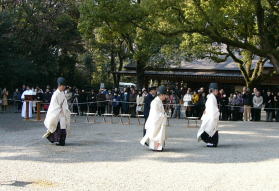 |
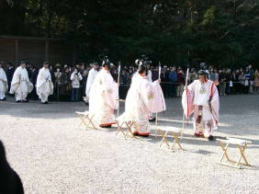 |
 |
| Three Shinto priests enter and have seats in front of the front shrine |
entrance of dancers and a band | formed up |
TOKA SHINJI
Jan. 11th
10:00 a.m. -
The original rites of Toka Shinji was started in China, and introduced
to Japan.
It had been held in the Imperial Courtin the Nara period (710-782)
as one of the anual functions called Tohka-no-sechie .
It has been remained as Touka Shinji in Atsuta Shrine (Jan. 11),
Sumiyoshi-Taisha (Osaka, held on Jan.4, 1:00p.m.-), and as Touka-no-sechie
in Aso Jinja.
Shinto priests step on the ground to make spirit of the ground stable
and pray for driving out evil spirit and getting happiness.
It is also known as "Ararebashiri" or "Oberobero-matsuri".
"Oberobero"is onomatopoeia of the sound of furi-tsuzumi drums.
The members for this rites are one jitou (詩頭), four maiudo (舞人、dancer),
five beijuu(陪従、singer),
one fueyaku (笛役、Japanese flute player) and one ganshi (雁使 messager).
 |
 |
 |
| Three Shinto priests enter and have seats in front of the front shrine |
entrance of dancers and a band | formed up |
First, Shinto priests give ritual Shinto prayer called norito,
and beijuu sing Honsuraku (万春楽, lit.: enjoy ten thousand spring) song.
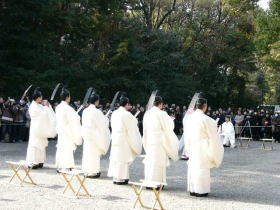 |
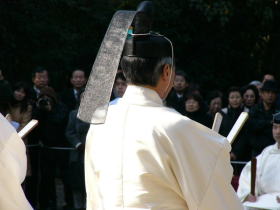 |
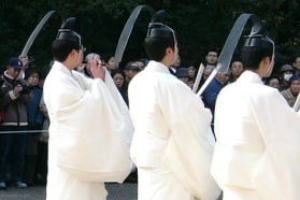 |
| - | play the shakubyoushi | Japanese flute and shakubyoushi |
Then beijuu sing songs of Touka, and maiudo (dancers) dance Uzue-no-mai dance and Ougi-no-mai dance.
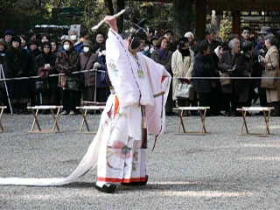 |
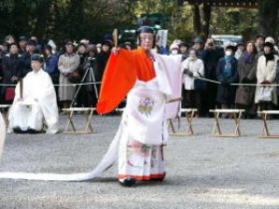 |
| Uzue no mai dance with a stick called uzue |
Ohgi no mai fan dance |
Timing to the shomon (詔文,the Emperor's message) read by jitou, a Shinto prieat who take a role of Kou-koji (高巾子)
turn on the furi-tsudumi .
Then they play the furi-tsuzumi ( a kind of drums )
Visitors listen to the sound and ponder their future by themselves.
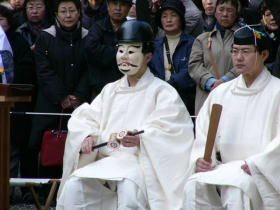 |
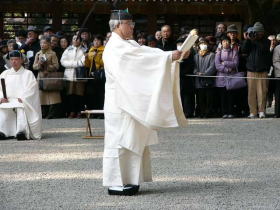 |
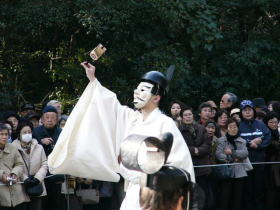 |
|
| Koukoji | Jitou read the Emperor's message | turn on the furi-tsuzumi |
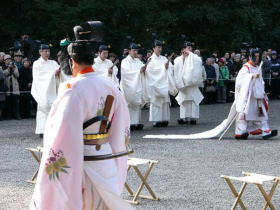 |
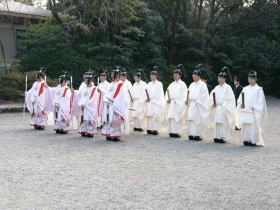 |
10:00 a.m. .......in front of Yougonoma-sha and the Hongu (main shrine)
1:00 p.m.........in front of the betsuguu (shrine annex), and Oosakida-jinja
1−1−1 Jingu-Nishi, Atsuta-ku, Nagoya
TEL: (052) 671-4151
Get off at "JINGU-NISHI" on the MEIJO subway line
Take exit No.2
7 minutes walk
![]()